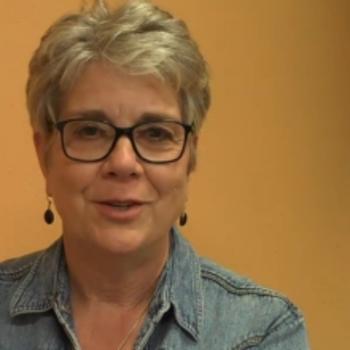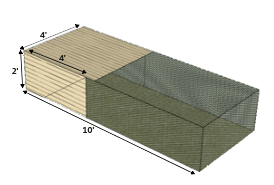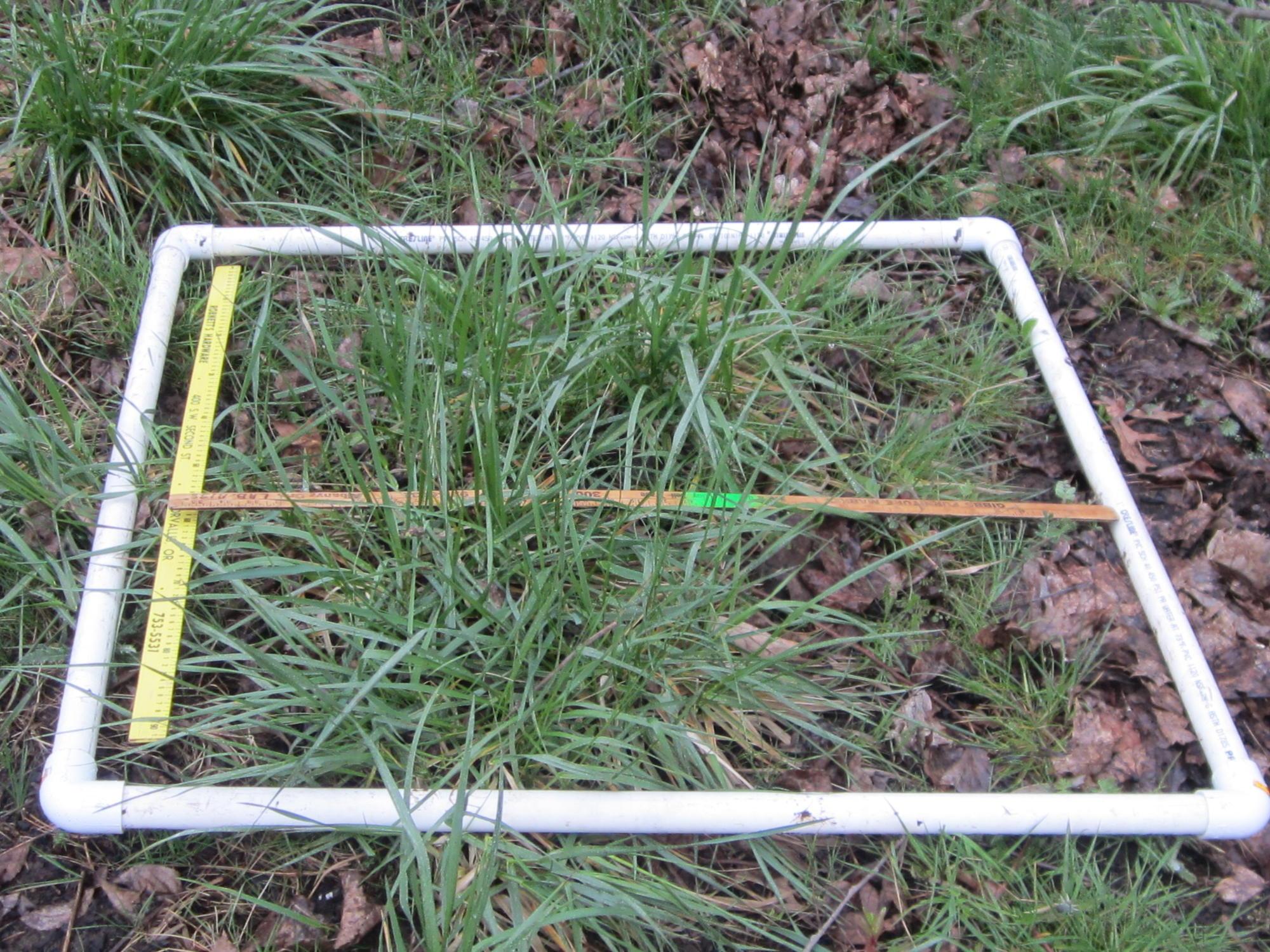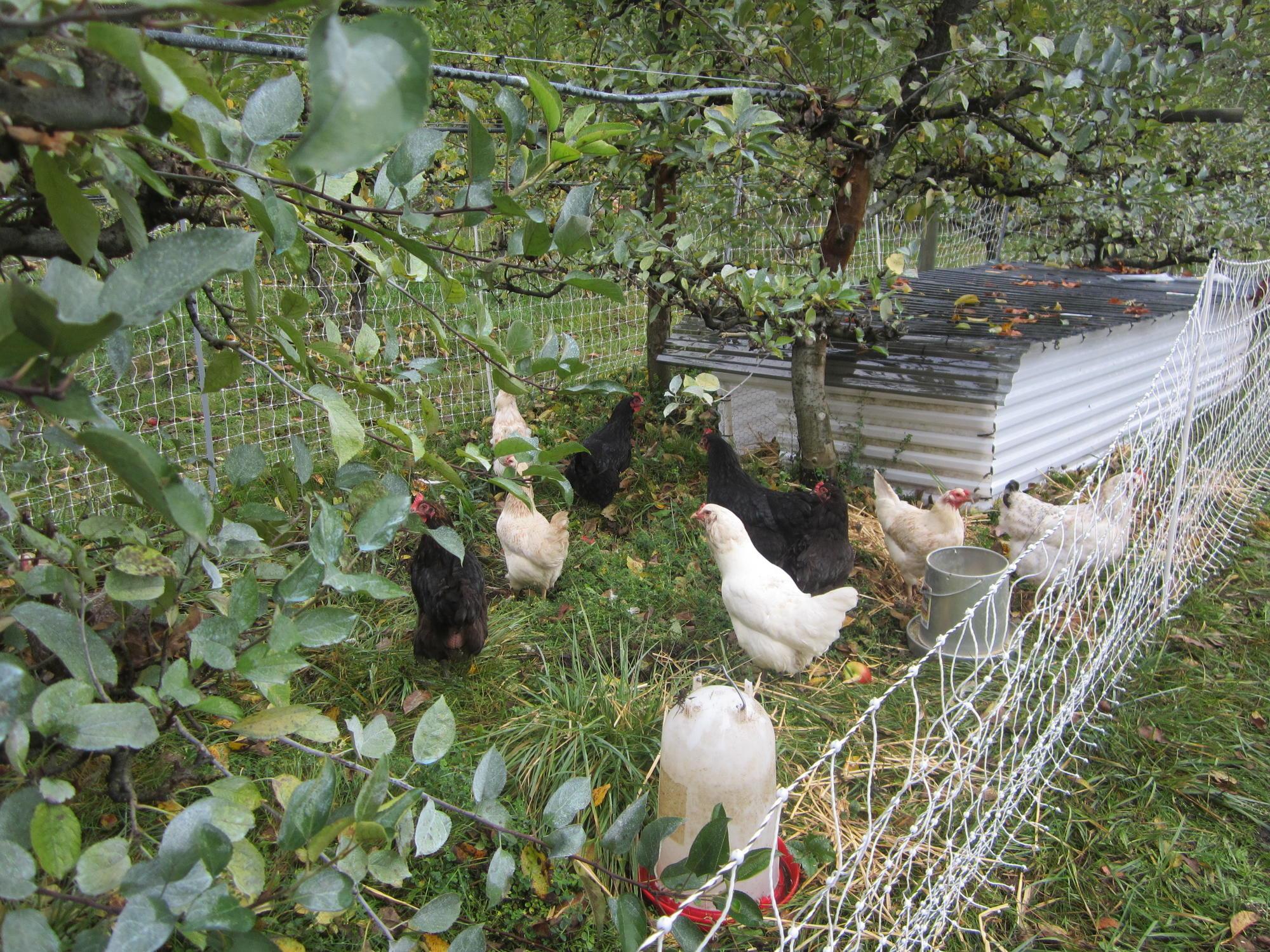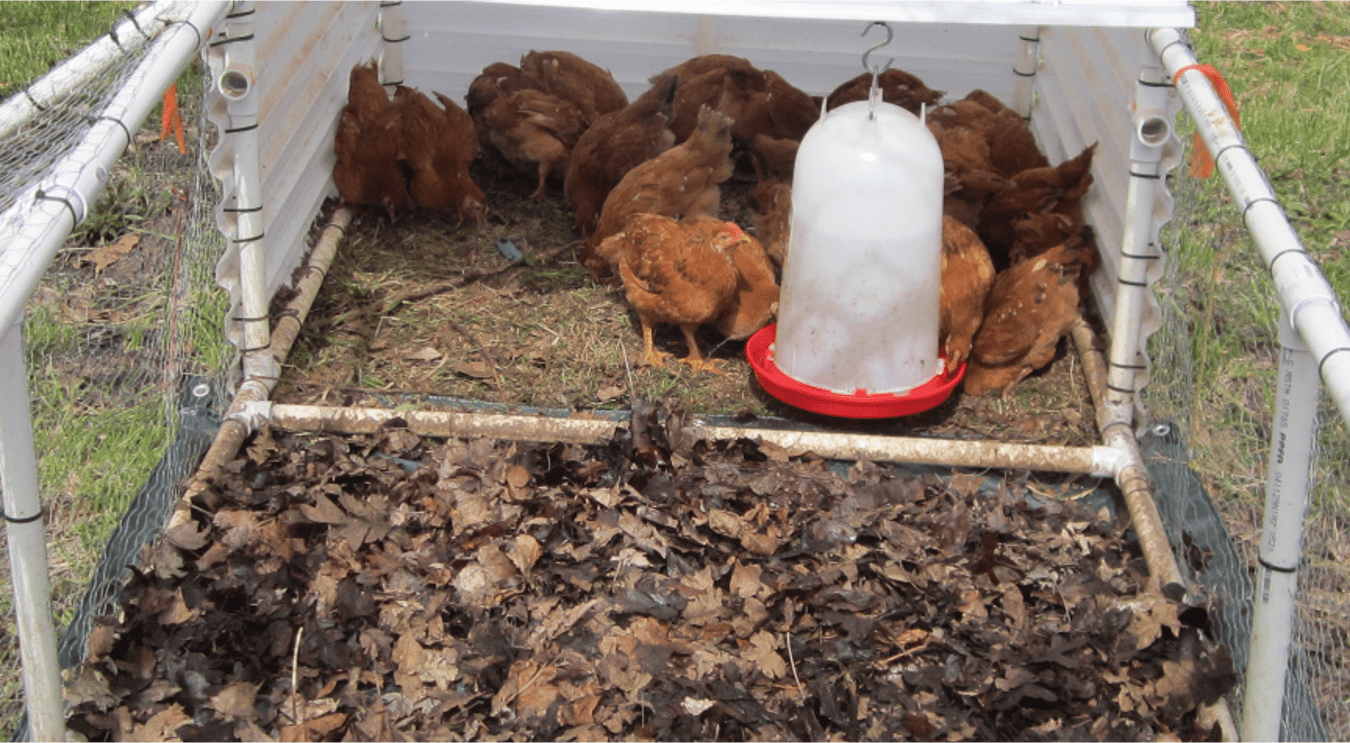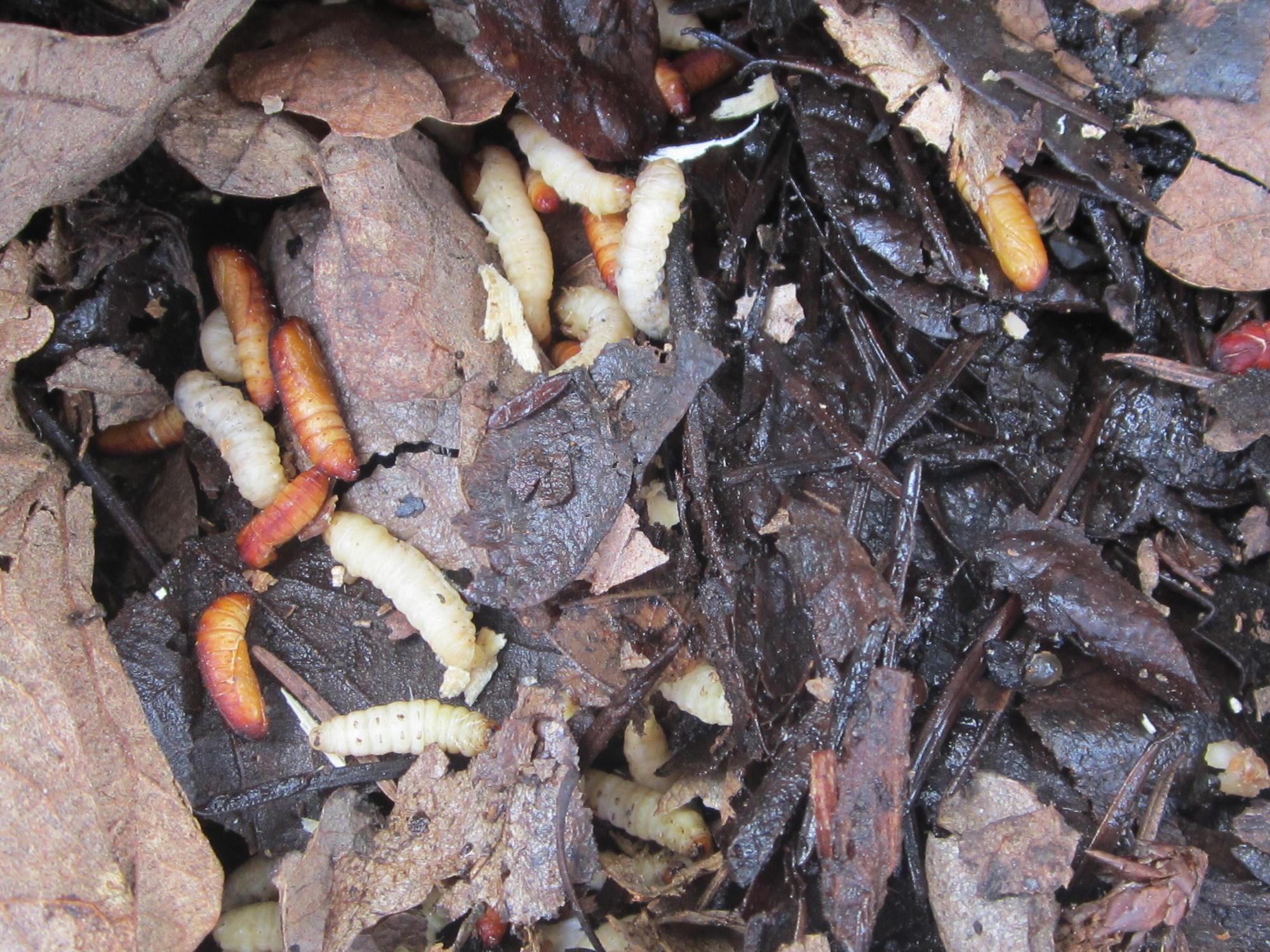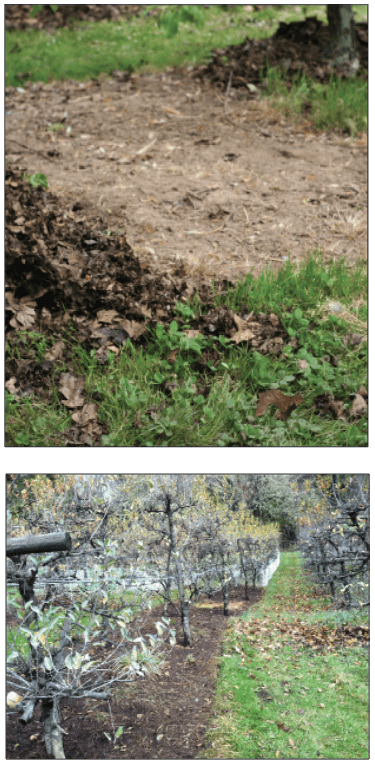It can be hard to manage insect pests and weeds in fruits, berries and other woody perennial crops. Growers can’t till the soil to control weeds. That leaves manual labor and chemical control as the most effective strategies.
Chickens are an alternative some orchardists have considered. Chickens scratch the soil in search of insects, seeds, young plant shoots and other food. Growers may exploit this foraging behavior to help control insect pests and weeds.
The larvae of codling moth (Cydia pomonella) and apple maggot (Rhagoletis pomonella) develop inside the fruit and feed on its pulp. Managing these common pests can be difficult because larvae are protected within the fruit, putting them out of reach of conventional integrated pest management tools. Once mature, however, the larvae of codling moth and apple maggot drop out of the fruit and onto the orchard floor to search for pupation sites; at this stage they are vulnerable to foraging animals, including domestic chickens.
Certain breeds of poultry feed voraciously on insects, weed seeds and seedlings. Australian researchers reported that poultry (breed unknown) were more effective than insecticides at suppressing apple weevil populations. Similarly, in a French study, free-range ‘Label Rouge’ (‘Red Label’) chickens reduced weevil populations in a peach orchard and eliminated weeds.
We deployed broilers and laying hens against larvae and pupae of moths and flies as well as weeds. Broilers were held in chicken tractors — movable housing — within the orchard. Layers were penned into larger areas of the orchard. We found that chickens, particularly broilers, are a useful way to reduce pests and weeds.
The aim of this study was to investigate the feasibility of integrating poultry into an organic apple orchard, and to understand the contribution of poultry to manage insects and weeds. The study was conducted over 13 months beginning in April at Brooklane Specialty Orchard in Benton County, Oregon. While our results were not as promising as our optimism, our findings indicate that chickens can be a useful tool in a home orchard or a commercial setting where poultry are already part of the overall production scheme.
Experimental design
We conducted two separate experiments in different areas of the orchard, one using broilers for insect and weed control, and one using laying hens. We chose ‘Red Ranger’ broilers and ‘Leghorn’ and ‘Black Copper Maran’ laying hens for this project because these breeds are known to thrive in a pasture setting and have an energetic temperament, which leads to active foraging. All growing animals are hungry, and their diets must provide for their growth needs. The more mature layers require sufficient nutrients for their maintenance and reproductive needs.
No herbicides were applied to any of the study alleys. The baseline and post-foraging percentages of weed cover were assessed by visual estimates. In this study, every plant growing within the tree row was counted as a weed and categorized as a grass or a broadleaf. Because both types of chickens received supplemental feed, and because their manure was deposited directly on the orchard floor, we assume that the chickens contributed to subsequent weed populations. For the broiler trial, percent weed cover within a row was assessed before chicken tractors were deployed, directly after they were removed from the orchard and one year after the foraging treatment was initiated. For the layer trial, percent weed cover within a row was assessed before introduction of the hens, then after six weeks, 12 weeks and 18 weeks of foraging. Although we do not present the data here, we have evidence that mulching the orchard floor after the chickens moved through improved subsequent weed control.
Broiler experiment design
- Broilers were brought into the orchard at 3 weeks of age and were processed at 12 weeks.
- Movable chicken tractors housed 25 birds and were placed within a tree row on April 1. We deployed four chicken tractors in one acre of orchard.
- Each tractor was moved down an orchard row every two to three days.
- Broilers were removed from the orchard for processing on June 1. We did not introduce a second cohort of broilers.
- National Organic Program standards prohibited us from applying chicken manure for three months before fruit harvest. Had we introduced a second cohort of broilers, the three-month waiting period would have put apple harvest after Nov. 1. Many Pacific Northwest varieties are harvested before that date.
Layer experiment design
- Layers were penned into a tree row with electric poultry netting, but otherwise allowed to range free under the orchard canopy. These rows had never been treated with broilers in chicken tractors.
- The 48-inch high netting was electrified with a solar fence charger and was attached to built-in posts.
- Each pen contained a low-profile coop with nesting boxes and shelter from weather and predators.
- Each of four pens was stocked with 10 layers, for a total treatment area of about one-half an acre.
- Layers were introduced in November when they were at least 1 year old and remained in the orchard until the following March.
- Layer pens were moved within the trial area approximately every six weeks.
- Broilers and layers were provided with larvae and pupae of nonpest species representing codling moth and apple maggot larvae and pupae. Nonpest species were used to reduce risk of infestation in the orchard.
Larvae and pupae were mixed into soil and leaf litter, which was spread over a tarp or buried to ground level in a shallow tray, which prevented the larvae from escaping into the soil. Tarps or trays were removed after 24 hours. All leaf litter and soil was sifted to recover any remaining insects.
All chickens were provided with sufficient water and feed to supplement their foraging activities.
Chicken tractor design
Chicken tractors have been designed largely for pasture settings. Tractors allow the foraging chickens to be moved around the pasture while remaining contained. The study orchard had been established and pruned to produce fruit on low branches. To fit under the trees, our chicken tractors were built to a lower profile. Figure 6 shows a model that is practical under fruit and nut trees. A design that works well in one setting may not work as well in others, so you may wish to customize your chicken tractor. A good chicken tractor should:
- Be durable and lightweight.
- Provide protection from the elements.
- Provide access to feed and water.
- Provide 1.5 to 2 square feet of space per bird.
For other chicken tractor designs, see “Resources.”
Key findings: insects
We compared the percent recovery of insects between plots with and without chickens.
- Neither broilers nor layers showed significant preference for larvae vs. pupae. Broilers showed a significant preference for moths vs. flies.
- The broilers proved to be voracious consumers of the larvae and pupae provided, consuming nearly 99% of insects provided from the age of 4 weeks and older.
- Layers had a greater area over which to range, and a greater choice in foraging locations.
- Layers spent the winter out of doors. They consumed 90% of the insects provided in November but less than 40% of the insects provided thereafter. This reduction may have been due to reduced activity levels or due to predation against the layers themselves, which always increases in the winter. Chickens that are watching for predators are less able to concentrate on scratching. We did not measure how much supplementary feed they consumed.
Key findings: weeds
Broilers
- Broilers significantly reduced total weed cover inside the chicken tractor and in the orchard row after nine weeks of foraging.
- After foraging, the portion of the treatment area covered by grasses decreased by 9%. In the untreated control, coverage by grasses increased by 23%.
- Foraging had no significant effect on broadleaved weeds.
- One year after the foraging treatment was initiated, there was no significant difference
in weed coverage between foraged and
untreated areas.
Layers
- Though layers reduced ground cover in the short term, long-term effects were not significant.
- By February, foraging layers had reduced grasses by 33%, while in untreated areas, grasses increased by 9%. By March, there was no difference in ground cover between foraged and untreated areas.
- From November to March, layers reduced ground cover by less than 10%.
- In the untreated control, grass and broadleaf coverage each decreased by 14%. It is possible that supplemental feed contributed to grassy weed coverage in foraged areas.
- It may have been that laying hens preferred one area over others for protection from weather or predators and provided uneven weed and insect control.
Chicken vs. predator
Predation of chickens by wildlife can reduce the flock to a suboptimal density for pest control. The layers in our study were much less sheltered than the broilers, and they foraged during the winter, when predation pressure was greater. Within their managed free-range row, the layers experienced significant predator pressure.
Principal predators in this Willamette Valley study were hawks, foxes and raccoons. Opossums and rodents also prey on chickens. The study orchard was bordered on one side by a creek. Foxes and raccoons, especially, travel creek systems.
Electrified fencing did not prevent the loss of layers from ground-based predators. Similarly, providing cover and reflective discs did not prevent loss from aerial predators. The predation rate on layers approached 37% by March.
Only hens were deployed in our study, although roosters have been shown to protect their flocks from predatory birds. Roosters also cause the hens to spread more evenly across the site, which would have impacted both weeds and insect pests.
Convert chicken density from acreage to your home orchard
Some readers might apply this concept to a home orchard on an urban lot. Here’s how to calculate the stocking rate if you are working with square feet, rather than acres.
- 1 acre = 43,560 square feet.
- The square footage of the orchard is the length times the width.
- Divide the treatment area by 43,560.
- Multiply this quotient by 200. This will prorate the density of poultry for your orchard.
Example: I want to put chickens into an orchard that is 20 feet x 80 feet on my urban lot. How many chickens should I provide?
- Compute the area of your home orchard: 20 × 80 = 1,600 square feet
- Divide the area of your orchard in square feet by the number of square feet in an acre: 1,600 ÷ 43,560 = 0.0367
In this example, my home orchard is about 4% of an acre. I rounded up from 0.367 to get 0.04. - Multiply 0.04 (the portion of an acre represented by my orchard) by 200 (the density of chickens per acre): 0.04 x 200 = 8
In this example, eight chickens should be enough to manage weeds and insect pests.
In this project, we established stocking rates of broilers and layers as a means of providing partial insect and weed control in apples. We project that the results would be similar in other tree fruit crops. We established that broilers in the spring were voracious feeders on moth and fly larvae and pupae, and that they provided short-term reduction in weed control. Mulching the orchard floor after removing the broilers’ chicken tractors provided longer-term weed control. Older laying hens required more space (resulting in lower stocking rates), did not forage as heavily in winter, and suffered significant predation in winter. In this setting they did not perform as well as broilers in pest and weed control. Although broilers are effective at pest and weed control, they are not cost-effective as a stand-alone strategy. However, they can integrate well into a home orchard or a commercial setting where chickens are already a desired element of the overall production strategy.
Chicken tractors: Are they right for you?
Home orchard, highly diversified small farm or commercial orchard — the integration of chickens into any of these will require careful thought and a clear statement of the goal of the enterprise.
Initially, we wanted to identify whether chicken rental for insect and weed management could be a service, as goats or sheep are rented out for weed management. However, goats and sheep are valued for their ability to produce meat and milk from low-quality forages. The plants the property owner wishes to manage with grazing may often be of low quality. By contrast, chickens require higher-quality, often grain-based feeds to produce meat and eggs.
Other considerations for integrating chickens into an orchard:
- How many eggs layers can produce: Production slows or stops altogether in winter without supplemental lighting; layers produce eggs from around 6 months of age up to 5 years.
- The market price for eggs and the volume of eggs necessary to break even.
- The quantity and quality of supplemental feed.
- The replacement cost of birds lost to predation.
- The predator population on your property, and your ability to provide secure housing.
- How chickens will complement other pest management strategies in your orchard.
- The availability of labor to tend to the chickens, gather eggs or process the chickens at slaughter.
The research density for broilers was 100 birds per acre; that density cost us $11.05 per bird for nine weeks of insect and weed reduction. The commercial scale of 200 birds per acre would have reduced the cost to $7.47 per bird and increased pressure against weeds and insects. Placing a second group of 3-week-old broilers in the orchard on June 1 would have produced 12-week-old broilers in early August. This would have changed the profit potential for broilers and increased foraging pressure against weed and insect pests.
Layers are larger birds requiring more space. At the research stocking rate of 80 layers per acre, laying hens as orchard insect control cost us $5,900 per acre. This number would have been somewhat reduced if we had subtracted the cost of insecticides not applied, but that would not have offset the losses. It may be that younger layers put out in the spring would improve these numbers. Orchardists of any scale who also keep chickens will see a benefit from this practice, but we cannot claim that chickens will be a profitable or complete pest management solution.
Resources
- Annala, D., B. Tuck, S. Kerr, E. Hammond and S. Olson. 2014. Living on the Land: Backyard Chicken Coop Design. EC 1644. Oregon State University Extension Service.
- Bush, M.R., M. Klaus, A. Antonelli, C. Daniels. Protecting Backyard Trees from Apple Maggot. 2005. Washington State University Extension.
- Cazaux, L. “Mixed Orchard Animals and Mixed Orchard Vegetables Systems.” 2015. Master’s thesis, Norwegian University of Life Sciences.
- Darre, M.J. Almost Everything You Need to Know About Raising Broiler Chickens. University of Connecticut.
- Detweiler, A.J. Life Cycle of the Codling Moth. 2018.
- Facts and Figures. 2019. Oregon Department of Agriculture.
- Fernandez, D. and C. Sanders. Is using goats, sheep to control weeds and brush right for you? 2014. University of Arkansas Cooperative Extension Service, Pine Bluff, Arkansas.
- Jacob, J. Normal Behaviors of Chickens in Small and Backyard Poultry Flocks. 2015. University of Kentucky. eXtension
- Knight, C. A Quick Guide to Raising Pastured Broilers. 2020. Pennsylvania State University Extension Service.
- The Livestock Conservancy. Leghorn (Non-Industrial) Chicken.
- (USDA) 1999. Crop Profile for Apples in Oregon. United States Department of Agriculture. Accessed Nov. 15, 2011.
- Washington State University Extension Service. Pastured Poultry. Organic Farming Systems and Nutrient Management.
References
- Hilaire, C., Mathieu, V., Joly, T., Mirabito, L. 2001. Against pests of peach: ‘red label’ chickens, a selective natural enemy. Infos – CTIFL, 170: 38-40.
- Yates, L., Spafford, H., Learmonth, S. 2007. Apple weevil (Otiorhynchus cribricollis) management and monitoring in Pink Lady orchards of south-west Australia. Plant Protection Quarterly, 22: 155-159.
